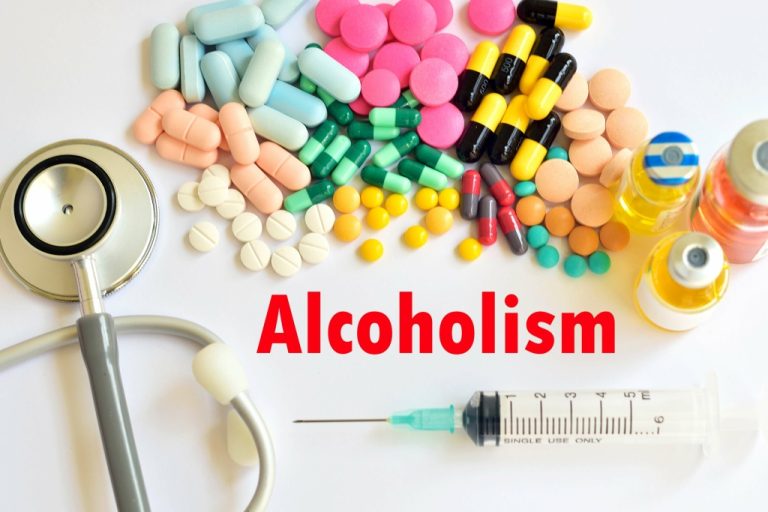Content
There is not one single treatment approach that works best for everyone, so it is important to reach out to a treatment center to discuss options and develop a plan that works best for you. Like other chronic diseases, alcoholism can be identified and diagnosed based on certain symptoms and can be managed with professional treatment. Treatment options often include a combination of medications, therapy and cognitive behavioral treatment in inpatient and outpatient settings.

He didn’t put the song there and the only way to get it to stop is to take another drink. Disease management requires acceptance of a problem, follow-through with treatment, and an understanding that a person can have periods of symptom flare-ups or relapse (but this doesn’t mean hope is lost). You can recover from AUD, but it often takes time and commitment. Lean into your loved ones for support and ask them to help you through this difficult time. It’s never too early to see a primary care physician or another healthcare provider about your relationship to alcohol.
Alcoholism vs alcohol use disorder—what’s the difference?
With continued use of alcohol or drugs, the nerve cells in the basal ganglia “scale back” their sensitivity to dopamine, reducing alcohol’s ability to produce the same “high” that it once produced. This is called building up a tolerance to alcohol and it causes drinkers to consume larger amounts to feel the same euphoria they once did. When the drinking “song” starts playing in the mind of an alcoholic, he is powerless.
Finally, chronic alcohol abuse heightens the risk of stroke and heart disease through cardiomyopathy, high blood pressure, and failed smoking cessation. Though at-risk and binge drinking can result in a range of adverse consequences, not all people who engage in these kinds of unhealthy alcohol use have alcohol use disorder. For many people, alcohol seems inextricably linked with a social life.
What is moderate drinking?
Not surprisingly, the AMA supported the faulty findings with limited investigation. The two members of the team who reported the false discovery of the gene were not without bias. Ernest Noble is the former director of the NIAAA and Blum, a Pharmacologist sober house for Texas University, markets his own remedy for the malady in the form of supplements. Medical professionals are admittedly incapable of helping drug addicts and alcoholics so they pass the buck to organizations outside of the medical community.
How many drinks do alcoholics have a day?
Alcoholics generally drink excessively, often much more than four drinks per day and in a manner they can't control. Excessive drinking is a serious health problem for millions of people in the United States. Alcohol addiction, or alcohol use disorder (AUD), is one facet of problem drinking.
Genetic, psychological, social and environmental factors can impact how drinking alcohol affects your body and behavior. Theories suggest that for certain people drinking has a different and stronger impact that can lead to alcohol use disorder. If you feel that you sometimes drink too much alcohol, or your drinking is causing problems, or if your family is concerned about your drinking, talk with your health care provider. Other ways to get help include talking with a mental health professional or seeking help from a support group such as Alcoholics Anonymous or a similar type of self-help group.
THE FREEDOM MODEL FOR ADDICTIONS
Nonetheless, it was Jellinek’s “Stages of the Alcoholism” that led to diagnosing alcoholism as a disease and eventually to the medical acceptance of alcoholism as a disease. Astoundingly, the inception of the disease theory and treatment for substance abuse is based on fraud. In earlier versions of the DSM, alcoholism was categorized as a subset of personality disorders. In short, the need for addictive substances becomes hardwired in the brain, to the point that the brain can’t distinguish between healthy rewards and drug rewards.
However, if someone who enjoys social drinking significantly increases their consumption or regularly consumes more than the recommended quantity, AUD may eventually develop. In the past, a person with this condition was referred to as an “alcoholic.” However, this is increasingly seen as an unhelpful and negative label. Health professionals now say that a person has an alcohol use disorder (AUD). Alcohol use disorder (AUD) is listed in the Diagnostic and Statistical Manual of Mental Disorders (DSM). The DSM is an authoritative guide that mental health professionals in the US use to diagnose mental health disorders. Alcohol use disorder (AUD) is the proper term for a condition in which there is an inability to control alcohol use despite a negative impact on health and other aspects of a person’s life.
What is considered 1 drink?
If you are concerned about yourself or a loved one, it’s time to seek help. Alcohol use disorder is diagnosed based on criteria as outlined by the Diagnostic and Statistical Manual of Mental Disorders, Fifth Edition (DSM-5). A person must meet at least 2 of the 11 criteria during the same 12-month period. Additional lab tests including screening for nutritional deficiencies and blood markers of inflammation can also be useful to determine the illness stage. It can depend on how high-functioning the person with the disorder is and how long they’ve been in the cycle of addiction.

Recent Comments